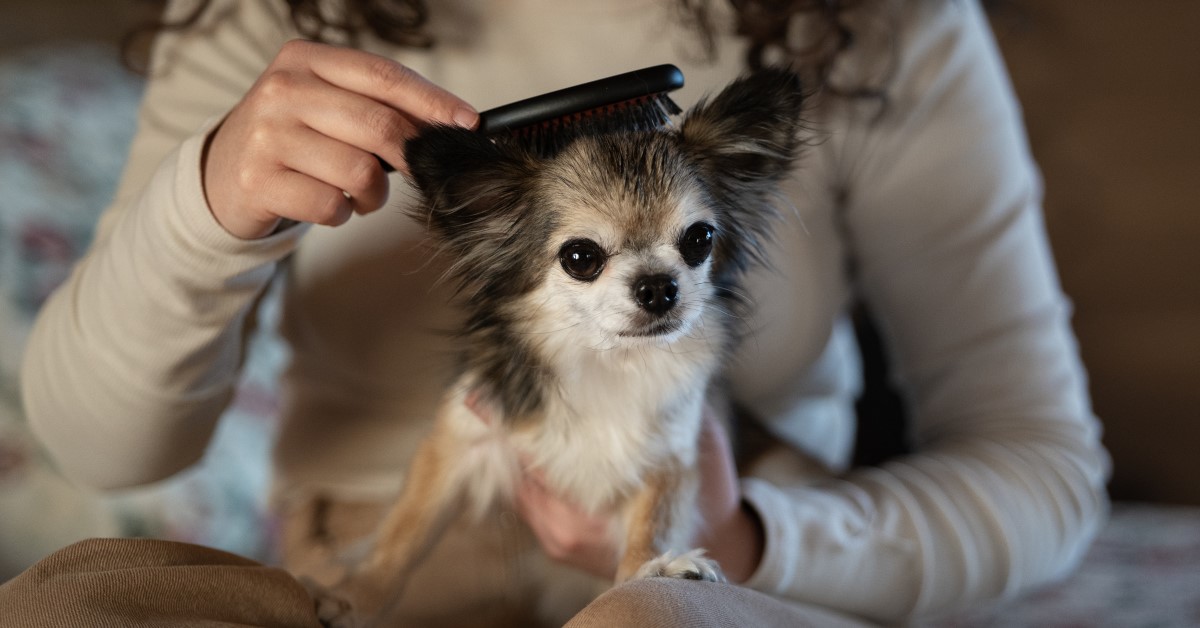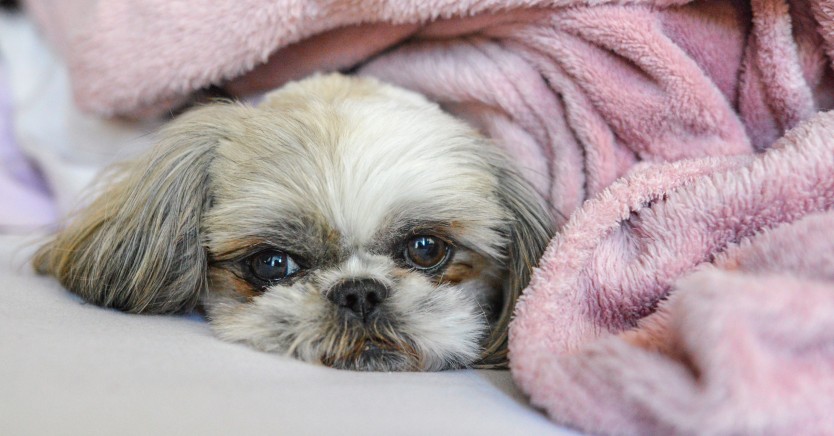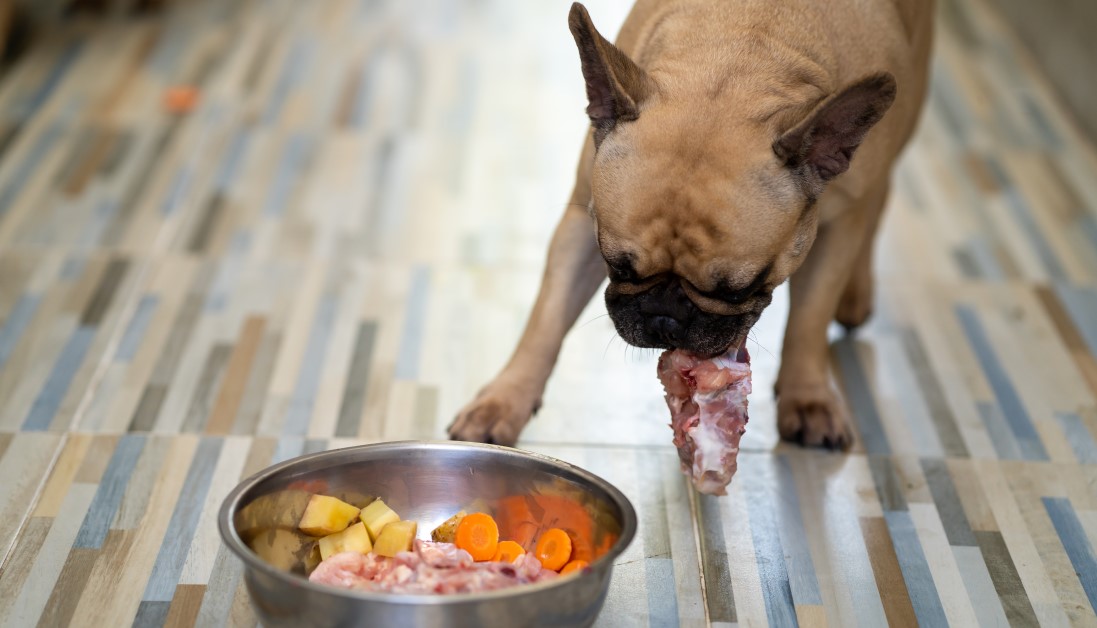Guide to Dog Brushes and Combs
Discover a wide assortment of dog grooming combs and brushes to keep your pet’s coat healthy and beautiful.

Regularly grooming your dog does more than keep your pet looking and smelling good. It also promotes healthy skin and a beautiful coat and reduces the risk of mats, which can cause painful abrasions and ulcers if left untreated. Dog grooming is also an important component of pest prevention and can help you detect certain health issues early on. While basic grooming involves a variety of tools and equipment, combs and brushes are among the most important. Before purchasing supplies, compare different types of dog grooming combs and brushes to find out which is best suited for your pet.
Common Types of Dog Combs and Brushes
Slicker Brush
Slicker brushes can be used on all types of coats due to their versatile design. They are constructed of either a curved or flat head with rows of thin wire pins that easily move through the hair to remove loose fur and detangle. The fine wire bristles are angled in such a way as to prevent irritating the animal’s skin. Some models may also have protective tips. While slicker brushes can be used for any hair type, they are best suited for medium-to-long-haired dogs, such as Cocker Spaniels and Yorkshire Terriers.
Rubber Dog Brush
If your pet detests the grooming process, a rubber dog brush may be best suited for your dog. As the name suggests, this type of brush features rounded rubber knobs that gently massage the animal’s skin as it brushes. This type of brush can go by other names, such as curry combs.
Pin Brush
A pin brush looks like a slicker brush, but the pins are usually coated with plastic or rubber, similar to a human hair brush. This type of grooming tool is most often used on long, silky coats, such as on a Maltese or Shih Tzu. Pin brushes are usually oval-shaped and are useful for removing small knots, especially after bathing your pet.
Undercoat Rake
Dog grooming rakes are most often used for dogs that have thick undercoats. They look similar to a pin brush but have longer and fewer pins. Due to their ability to reach deep into heavy and double coats, they are commonly used for breeds such as German Shepherds, Chows, and Huskies. When choosing a dog undercoat rake, match the pin length to your pet’s hair to ensure that it’s able to reach the undercoat without being so long that the pins irritate the skin.
Dog Shedding Blade
While the name of this tool may be intimidating, a shedding blade is merely a horseshoe-shaped comb with a set of small teeth. When dragged across a dog’s coat, the blade efficiently removes loose fur. Shedding blades work on a variety of coat types, but are best suited for dog with flat, short, or combination coats.
Bristle Brush for Dogs
Bristle brushes are generally recommended for dogs that have short or wiry coats, such as Jack Russell Terriers or Schnauzers. The bristles are highly effective at removing loose hair and debris while adding a nice shine. This tool features clusters of tightly packed natural bristles that help stimulate the skin. In turn, this creates oils that help keep your pet’s skin and hair healthy and hydrated.
Dog Combs
Dog grooming combs are a popular alternative to brushes. They can also be used in conjunction with brushes to remove anything that a brush leaves behind, ensuring a tidy finish. Dog combs are often used as finishing tools to smooth out the fur for a softer and shinier appearance.
Similar to brushes, there are several different types of combs used for dog grooming, including:
General Use Dog Combs
A general use dog comb looks similar to a pin brush but instead of having wires, they have teeth. Some combs have teeth that are widely spaced to remove knots and tangles from the fur. Others have teeth that are more tightly spaced to help create a beautiful finish after brushing. General use combs are often recommended for animals with long, thick hair with an undercoat.
Flea Combs
No matter how long, short, thick, or thin your dog’s coat is, there is always a chance that parasites could be lurking inside. Flea combs are designed for this specific purpose. This type of tool helps remove fleas and other small critters that may be living under the fur and on the skin. The teeth of these combs are finely spaced to pick up even the smallest insects with ease.
De-matting Combs for Dogs
If your dog’s fur is prone to tough mats, a de-matting comb is a great solution. These combs are specifically designed to remove mats, especially in pets with heavy, thick coats. As the teeth on some de-matting combs can be quite pointed, it’s important to use caution to avoid irritating your pet’s skin or causing unnecessary injury.
Maintain Your Dog’s Coat with Regular Combing and Brushing
Having access to the right tools can make all the difference in keeping your pet’s coat clean, smooth, and healthy. As each dog is unique, it’s important to carefully consider your options and to choose a brush and/or comb that best aligns with their coat type, length, and texture. If you’re unsure of what type of tool is best for your dog, ask your veterinarian or groomer for suggestions.
Ready to start saving money on pet wellness care?
Then take a look at Mint Wellness, the pet wellness plan that provides fast reimbursement on routine pet care. Save on vaccinations, wellness exams, preventatives, dental, and more!
Learn More


